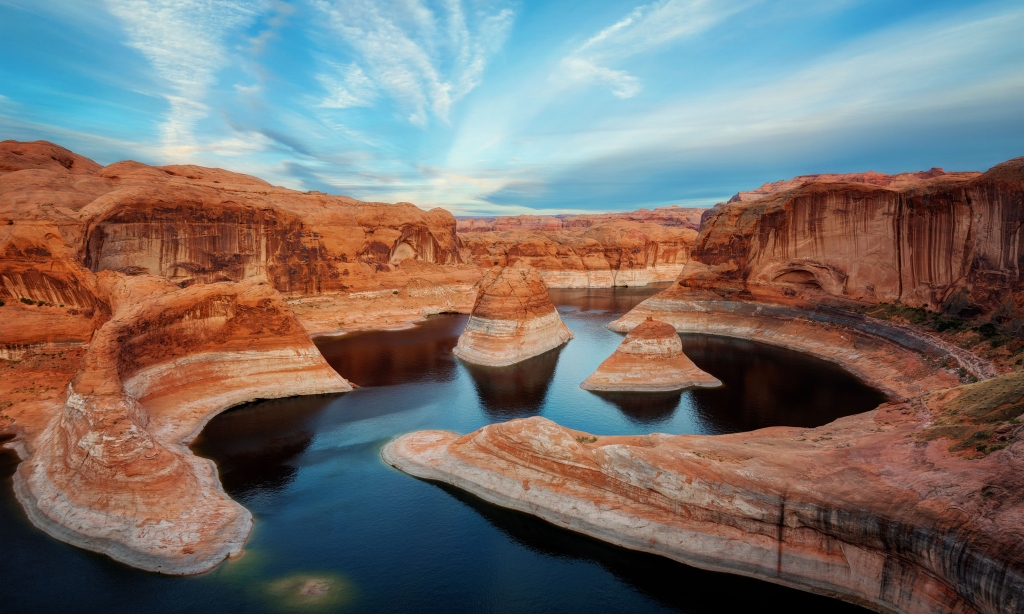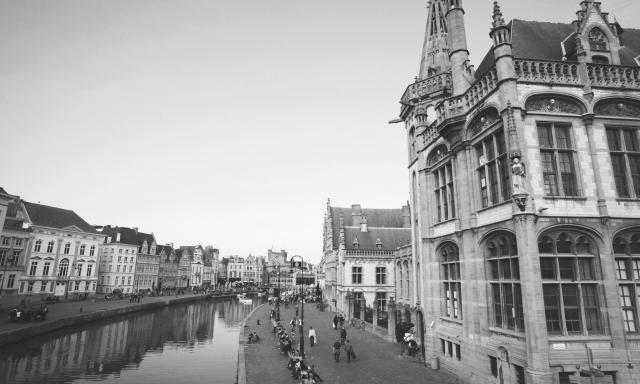

 Article
Article


Insights from
Fresh water is essential for life. No plant, animal or person can live without it.
However, water abundance cannot be taken for granted everywhere. A dry spell and record temperatures caught up with Europe this summer, testing farmers from Scandinavia and England as well as France, Netherlands, Germany and southern European countries. The level of the Rhine, Germany’s most important river, was historically low, making freight transport almost impossible on some stretches. Along the Elbe in Czechia, “hunger stones” — inscribed boulders with often-bitter warnings marking very low water levels — were again visible.
Cape Town almost ran out of water in South Africa, California has struggled with scarcity in recent years and Australia experienced its “Millennium drought” not so long ago.
The shifting temperature and precipitation patterns of climate change have increased water stress in Europe and elsewhere, but these factors that change water supply are by no means the only culprits. Not to be ignored are population growth and increasing economic activity that often go hand-in-hand with higher water demand and water pollution that reduces available freshwater resources.
Agronomist Stefan Siebert and the hydrologist Paolo D’Odorico emphasize that the production of the things we use or consume takes lots of water, and this “virtual water” trumps by any measure our direct water use. The water footprint of 1 kilogram of steak, say, is over 15,000 liters, or more than 100 times what an American uses for cooking, cleaning or hygiene per day.[1] Agriculture feeds the world’s ever-growing population and is by far the largest water user. Hence, how agricultural production and related supply chains are organized matters a great deal.
As water becomes scarce, it is key to allocate scarce water efficiently, both locally and globally. In market economies, rising prices typically signal scarcity, which may trigger increased supply, spur innovation or decrease demand. Interestingly, however, water prices are often set independent of scarcity.
Increased water stress forces societies to calibrate their water quality and allocate their scarce water efficiently. The challenges call for pricing water properly, fine-tuning water laws and regulations, and more broadly, leveraging society’s ability to adapt and innovate.
The ubiquity of water and the multifaceted role it plays invites a multidisciplinary analysis of how it affects our lives.
Experts from European and American universities and think tanks develop insights on water challenges by researching history, hydrology, law, agronomy, economics, engineering, architecture, public policy and more. The answers to the water challenge go beyond academia and traditional policy channels, however. They require the broader engagement of civil society — business, philanthropic and nonprofit initiatives.
To begin to make sense of the complexity, I recently agreed to serve (with Nicole Shea) as editor of a double issue on water for EuropeNow, the online journal of the European Studies Association at Columbia University. The double issue showcases the incredible diversity of academic study and institutional effort applied to these challenges. By showcasing the value of a multidisciplinary examination of global water challenges, I hope organizational leaders around the world may begin to better grasp the issues and possible solutions. Below are short summaries of the many topics covered in the issue, written by experts from around the world:
Powerful and, in many instances, effective responses to water crises come through public policies that leverage a government’s resources and its power to incentivize or regulate behavior. In water matters, progress has been made, but government action often still leaves ample room for improvement. This harks back to the basic questions of leadership and the common willingness to act that Arnold’s reading of medieval texts brought to the fore. Many key concerns about government action remain:
Governments and institutions have only started a conversation on pricing water properly, and how to do it effectively within a legal framework that takes into account social inequities and economic efficiency.
In the context of increasingly ambitious, yet incomplete and sometimes deficient public policy, there is ample room for civil society to play a role tackling water challenges. Nonprofit and philanthropic organizations may not have the vast resources and regulating power of governments, but they surely can inspire and show how interventions can make a difference. Companies are also influential players in the water space that can be allies in helping to move the needle in matters of sustainable water use.[2]And water centers and institutes can bridge the gap between academia and practice. The new issue of EuropeNow, therefore, includes perspectives from several practitioners in these sectors:
Take the example of former University of Virginia football Chris Long, now a popular player for the NFL’s Philadelphia Eagles. He raises funds to dig solar-powered wells in Tanzania, and, in doing so, inspires both young and old NFL fans and others. He and fellow NFL players lend their celebrity status to a cause that, unfortunately, still does not attract enough attention and funding.
Long strives to also begin a conversation about water issues in the United States and abroad. He is gradually seeking to connect with stars in other sports, like basketball, about water. In a sense, that is exactly what the more than a dozen water centers, institutions, academics and practitioners who contributed their thought leadership to the special water issue of EuropeNow are trying to do. Together, we are seeking to advance the conversation around global water challenges into every industry and every sector of society.
Much like the interrelated challenge of climate change, this pursuit comes about because no industry or sector is immune to the consequences if we do not develop insights and solutions together.
This article and the double issue of EuropeNow hopefully frame the global water challenge, but they are also calls to action. The challenge is complex. The knowledge we need to act is multidisciplinary. The solutions are collaborative.
Read “Water in Europe and the World,” the double issue of EuropeNow, with an introduction by Darden Professor Peter Debaere and Nicole Shea, director of the Council for European Studies at Columbia University and executive editor of EurpoeNow.
[1] https://waterfootprint.org/en/water-footprint/product-water-footprint/water-footprint-crop-and-animal-products/. For an analysis of U.S. water use, see Debaere and Kuerzendoerfer, Decomposing U.S Water Withdrawal since 1950, Journal of the Association of Environmental and Resource Economists (JAERE), March 2017, 155- 196.
2 Kitzmueller, M. and J. Shimshack, 2012, Economic Perspectives on Corporate Social Responsibility, Journal of Economic Literature, p. 51-84.
Debaere is a leading international economist, with a focus on international trade, multinationals and trade policy. His work addresses fundamental questions about the extent to which trade theories can explain actual international trade patterns. He has also examined the specific impact of trade policies on trade flows and international prices, as well as on the operations of multinational corporations. In recent years, Debaere has also been researching the economics of water.
B.A., KUL, Belgium; M.A., Ph.D., University of Michigan, Ann Arbor
The Global Water Crisis: Unpacking It Through a Multidisciplinary Lens
Share